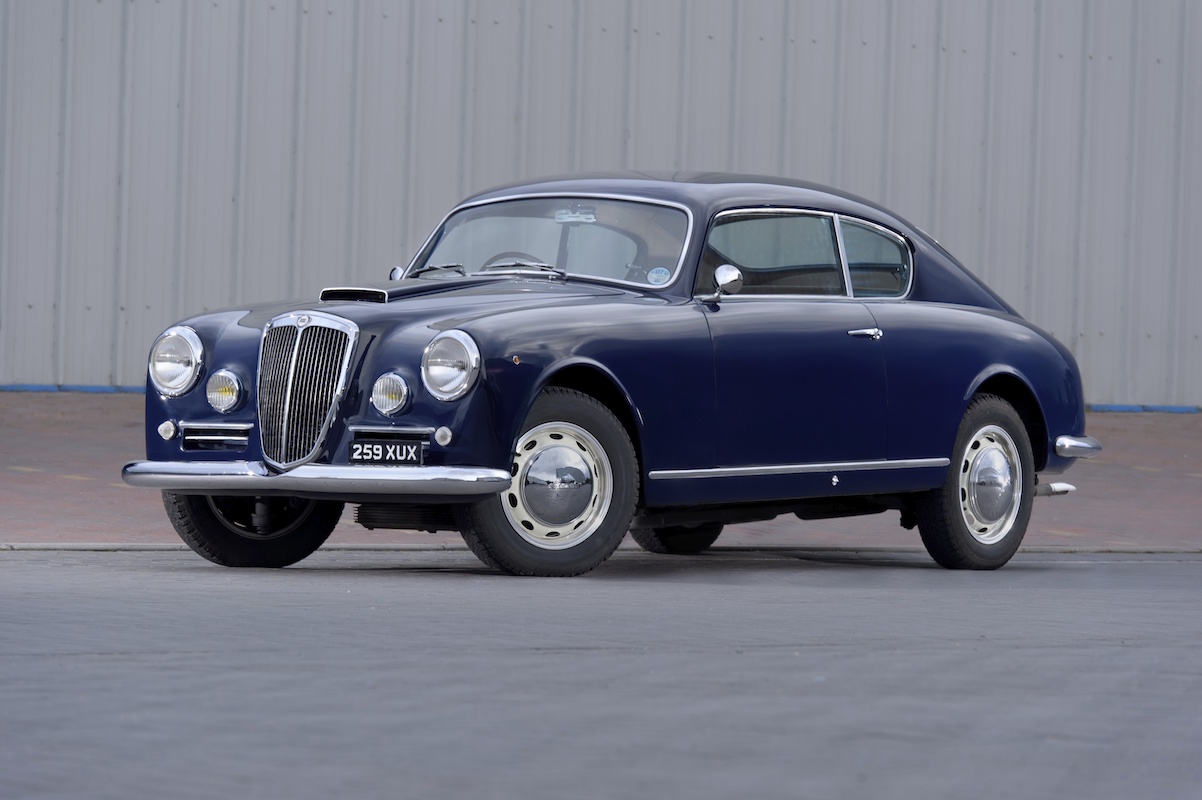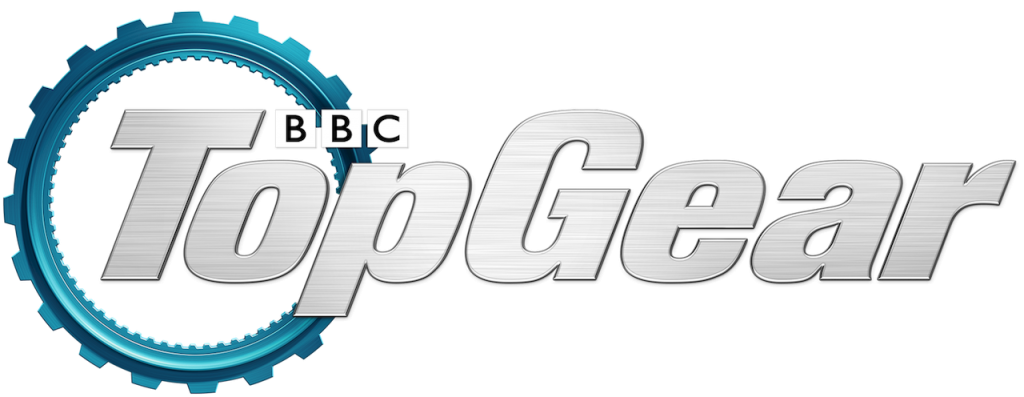Thornley Kelham carried out a full nut-and-bolt restoration of this 1954 Lancia Aurelia B20GT, chassis B20-3183, one of only 745 right hand drive Fourth Series cars produced. The car was purchased from a dealer in Switzerland and brought back to the UK where, upon closer inspection, it was revealed that more thorough restoration work was required than first thought.
In the 1950’s, the Lancia Aurelia was hailed as a revolutionary design combining luxury and performance. The B20 GT two-passenger coupé was introduced in 1951, mechanically the same as the B10 model but with a more powerful 2 litre engine. The car bristled with innovation – the first V6 production engine, transaxle, inboard rear brakes, monocoque. Immediately seized upon by wealthy Italian privateers, it achieved major successes in competition worldwide, starting with a second place in the 1951 Mille Miglia in virtually standard form. The model went on to be developed over almost 8 years and six distinct Series, and was bought by wealthy, discreet Italians – Lancias were expensive cars in their day. Today it is increasingly sought-after as perhaps the 1950s GT.
The owner of this particular Series 4 has wide experience of classic car ownership and also races in historic events. Our brief was to produce a fast road car with various upgrades, either accurate period items such as a Nardi twin carburetor set up, or discreet modern additions such as a hidden digital/MP3 music system. The car tested all our skills and required many replacement parts, and in total, the restoration took our team almost 3,000 hours of work over a 12 month period. Above all it enabled us to show just how good a fully-sorted Aurelia can be, and what an elegant and well-engineered machine it remains.
First steps and metalwork
- Higher lift camshaft
- Nardi twin carbs
- Floor gearchange
- Borrani wheels
- Nardi bonnet
- Better cooling (water and oil)
- Competition style interior in Connolly leather
- Ancillary instruments
- Modern (hidden) music system
- Fitted luggage
Engineering and Mechanicals
Engine
Transmission
Suspension and Brakes
Electrical
Paintwork and Exterior
Interior
Reassembly, testing and running in
The first step was to strip the car completely. All exterior trim, bright work, lamps and glass were removed from the car along with the interior– the seats, carpets, headlining, dash and instruments and so on. Since the decision had been taken to have the car chemically dipped it was vital that everything was removed – the process removes all paint, filler, corroded metal, aluminium…
Once the shell and panels were returned we mounted the car on a jig. Typical Aurelia corrosion throughout the sills and floor pans meant that we needed to fabricate supporting and bracing frames to accurate dimensions and place them underneath and inside the car to stiffen the shell. This ensured that it would not move once the corroded floors and sills were removed.
Replacement sills (inner, intermediate and outer) were fabricated in house, and correct pattern floor pans purchased in Italy. Once the structural work was complete, we used traditional panel beating techniques to make good the shape and contours of the car as per the original. Whilst in bare metal we fabricated an additional storage tray in front of the rear bench for keys, mobile phone etc.
We then did a dry fit of the car panels, seals, and locks to check for any gaps and check for correct fit and finish. We now had the basis for a fantastic car. At this point the owner made a number of key decisions with our input. Many of these cars had various upgrades in period and the opportunity was taken to incorporate several of these – primarily with a view to building a fast road car capable of both touring and road rallies – indeed just as Lancia originally intended. As a result, the following additional works were undertaken:
The above resulted in more metalwork – we reshaped a bonnet to create a Nardi scoop and chrome edge, and non-original, hidden security boxes (lockable) were fabricated in steel.
The Lancia engine was rebuilt to fast road specification, this included adding a ‘Nardi’ profile camshaft, a lightened flywheel and ‘Nardi’ twin carburettor kit. The engine was completely dismantled, examined thoroughly and replacement parts ordered as necessary (standard pistons were used). Although we were rebuilding the engine for fast road use, we still needed to balance this with sensible upgrades so performance would be improved without compromising reliability. The flywheel, crankshaft, rods, pistons and front pulley were all balanced to run smoothly with each other. We supplied and fitted the replica Nardi twin carburetor kit, set up to an original specification. Being unhappy at the quality of replica kits on the market we sourced an original set of manifolds and an original alloy airbox and had accurate patterns manufactured. Once happy with these (the airbox was redone) we had castings made. The manifolds were then tumbled to give an authentic finish, and then offered up to the engine so that final machining could be accurate. The intricate linkages were cast and machined, and 2 x Weber 40DCZ5 were fully overhauled and refinished. A correctly angled radiator to manifold casting was also supplied. The whole assembly was then fitted to the engine and run up.
Testing of the engine on the dyno revealed a lack of low end power so the carburettors were re-jetted. After half a day on the rolling road the engine was reading 134 bhp at the flywheel with good power and torque delivery.
Separately the radiator was stripped and a new high density core was fitted into the original header and bottom tank, and a modern oil cooler was fitted.
The car arrived with a standard column gear change. We sourced a complete floor change assembly – support casting under gear lever, gear lever and top and linkage rod from lever to transaxle. Period reports suggest that Gianni Lancia did not want the cars fitted with the floor change (competition privateers did) until a test proved that the floorchange was significantly faster than the column, gaining a car’s length advantage for each gearchange!
The Aurelia transaxle is a beautiful piece of casting and engineering. We stripped out this one (original to the car) and it was completely rebuilt with standard gear ratios.
The rear drum brakes are inboard on an Aurelia. Both front and rear (finned) drums were skimmed for roundness, wheel cylinders rebuilt and the shoes relined with a slightly harder material. Refurbishing the sliding pillar front suspension is a major job requiring specialist tools – which we have, and so the assembly was dismantled, cleaned and new stainless spring steel non-return valve washers fabricated. The assembly was then rebuilt using new bearings throughout.
The fourth Series B20GT was the first to have a De Dion rear end; simpler, heavier and less prone to oversteer than the previous IRS. The owner had been unhappy with the rear end set up, describing it as ‘floaty’ and so we had new adjustable ‘Koni’ rear shock absorbers made to our specification, which enabled us to set up the rear suspension to suit the owner’s needs.
A supplementary electric fan was added to the car with manual override under the dashboard. A common Aurelia failing is the wiper system, so we adapted a modern 2-speed system and fitted it ‘invisibly’. Ancillary oil pressure and water temperature gauges were refinished to look original (they were never fitted) and a secondary binnacle fabricated to the dashboard. An original, very rare ‘Condor’ radio was found in Italy and a modern digital radio and 4-speaker system fitted into the glove box with MP3 connectivity.
We also found and fitted original year –specific ‘Carello’ headlamps, and returned the car to correct pattern rear lamps (legislation in Italy meant that many early and mid-fifties Italian cars had to be retro-fitted with larger rear lamps and separate indicators).
To cope with the additional electrical load the alternator was upgraded to a ‘Dynator’ charging system which is housed in an aluminium casing for a period look. A new wiring loom was fabricated in correct materials with the necessary additions.
Finally whilst at Essen motorshow we found a pair of original Fiamm horns – very cool!
‘ Beauty, Durability and Driveability’ – two of these three are perhaps more influenced by a car’s paintwork than anything else. Our customer wanted a colour change to Lancia blue, and our ‘Standox’ colour-mixing machine enables us to match the majority of manufacturers’ paint codes, and we can also create colours to a customer’s exact specification. Although we are exempt from certain rules on paint types, in this particular case we opted for a modern specification water-based paint over which is applied a clear coat.
Upon leaving the metalwork shop, the car was completely abraded on all surfaces to obtain a totally clean, degreased surface (photo). A coat of epoxy primer was then applied throughout. All undersides were treated with a modern two-pack anti stone chip finish, thinned down to look more in period. Once cured this and the inside surfaces were painted in two-pack satin black paint. The engine and engine bay ancillaries are then fitted to avoid potential damage to the topcoat later.
Then began the long process of stopping up, masking, priming, rubbing down, treating to identify high and low spots, further stopping up, rubbing down and so on. After the third coat of primer and rubbing down with increasingly fine grades of wet grit, we were ready for the colour. The water-based colour was then applied, allowed to flash dry and then finished with clear lacquer topcoat. The car and its panels were then allowed to fully cure, before polishing to a high finish.
Having seen them on another car, the owner was keen to swap his standard front bench seats for competition-style Lancia bucket seats to an exact original specification. These were fabricated in house; shaping in heavy gauge wire the profile of the seats, making up new frames and making new bases. Throughout the process the owner visited us for fitting sessions – the seats were made to suit him, the position of the seats for his height, and the relationship between the seat and gear lever tailored to his choice. If you would like a pair to fit you – and your Aurelia – give us a call.
The interior of the car was completely re-trimmed in Connolly ‘Vaumol’ leather – 5 hides were ordered direct from Jonathan Connolly. ‘West of England’ wool cloth headlining was used (under which are hidden two of the speakers. For improved sound proofing the cabin and boot were lined throughout with ‘Dynamat’ sound/heat proofing material. New Lancia pattern rubber mats were purchased from Italy and cut to fit exactly. Our trimmer has also made matching fitted holdalls in Connolly leather together with a matching tool roll and map case. A fire extinguisher has also been fitted. The owner supplied an original, refurbished Nardi steering wheel, and we machined a new solid aluminium boss to ensure a good fit to the steering column.
Finally we fitted ‘Crow’ 4-part harnesses which can be used either as lap belts or twin shoulder and lap belts.
The interior is now a very nice place to be.
‘The devil is in the detail’ – never more true than in the reassembly of a car to top standards. We ensure that all the correct fittings are used – nuts, bolts, clips etc., and where necessary we remove modern manufacturers’ marks and sizes. All bolts are cut to the correct length. Many hours were spent on refitting all the opening panels to ensure the correct gaps all round. All exterior chrome was re-chromed, having been dry fitted beforehand. A new windscreen was bought from Italy, and all new correct profile rubbers. Sealing doors and windows to avoid wind noise and water ingress is another time-consuming task. All locks and catches were rebuilt and eventually the car was reassembled. The finishing touch was a new set of period-correct Borrani ‘bi-metalliche’ wheels with Pirelli Cinturato tyres.
The first time a ‘brand new’ car is fired up is a great moment, but further hours were spent on final adjustments throughout the engine bay and suspension. The next ‘milestone’ was passing the MOT (first time) and then we insist on putting around 500 miles on the car in order to iron out the inevitable teething troubles. The car was also taken for tracking and wheel balancing.
Throughout the restoration we encouraged the owner to visit us – all works were carried out under the same roof. We also supplied monthly invoices together with a full description of works carried out, and kept a full photographic history of the car. We have also had a full session with a professional photographer (thanks Ashley) as many of the photos on this website show. We leave the last word to the proud owner:
“Very knowledgable, great attention to detail, lots of enthusiasm, terrific people, and a fair price. The car looks like it just came out of the factory – only better – it looks and goes beautifully””














